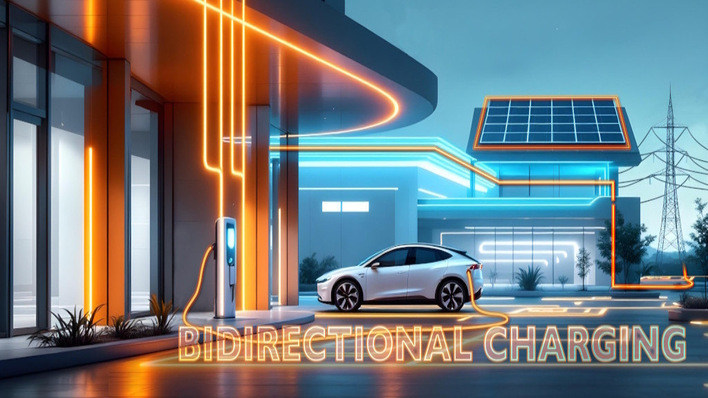As part of the EV-Fleet project, the transmission system operator Transnet BW has demonstrated that electric vehicles can easily provide control reserve. To this end, the company, together with partners, qualified a total of 155 electric vehicles for the provision of balancing power between June 2021 and June 2022. The result: the provision and delivery of balancing reserve from a virtual power plant consisting of a large number of EVs pooled together is not only possible in theory, but also in practice.
Controlling charging processes to serve the system
In the field test, Transnet BW activated the pool of electric vehicles or individual vehicles on the basis of set values from the grid control system for the provision of the control reserve. The focus was on the quality with which the vehicles can supply the control energy. For this purpose, on the one hand, the technical-communicative infrastructure for the provision and activation of balancing reserve by EVs was tested, which are parked at various locations.
See also: An electric bus fitted with integrated solar modules
On the other hand, the project partners investigated the question of how charging processes can be controlled in the future in such a way that the current conditions of the local distribution grid are taken into account and no grid bottlenecks occur there due to the system-serving controlled charging. "With EV-Fleet, we have made great progress towards the future stabilisation of the electricity grid through electric vehicles," says Kay Wiedemann, Team Leader Market Development at Transnet BW, summing up the results of the field test.
Effects on the distribution grid tested
This means that the possibilities for providing balancing power are becoming broader and broader, even without fossil-fuel power plants. In addition to this, the number of electric vehicles is increasing in the course of the mobility and energy transition, and with it the potential for their provision of system services. "With the project, we have gained important experience on measurement accuracy, data collection and the effects on the distribution grid, which is now being incorporated into further development work," explains Wiedemann.
Developing the concept further
The next step is to further develop the concept. Among other things, this involves taking into account charging losses and other external influences in the charging process. In addition, the transmission of data from a distance on the part of the vehicle manufacturers can still be developed. Further efforts are also needed to enable active balancing group management.
Also interesting: A charging solution concept to promote urban e-mobility
In addition to Transnet BW, Jedlix, a smart charging platform based in the Netherlands, was also involved in the project. In several project phases, Transnet BW was also supported by the distribution grid operator Netze BW, the control power provider Next Kraftwerke and the Fraunhofer Institute for Energy Economics and Energy System Technology (IEE). (su/mfo)







